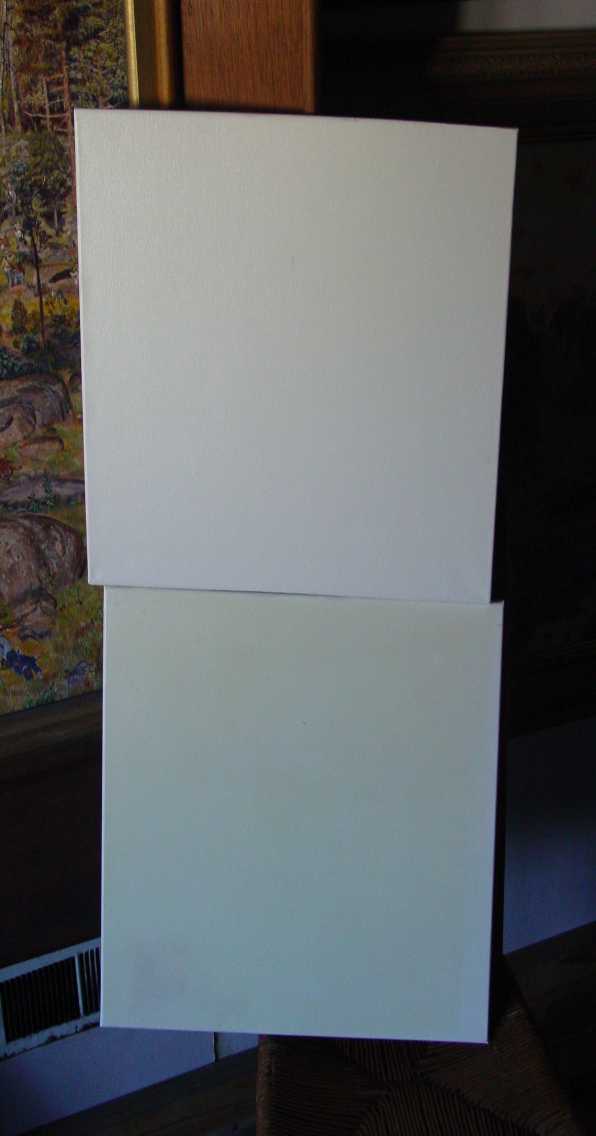
Varnishing an oil painting using ORIGIN Congealed Varnish
Easy, fast, durable and essentially non-yellowing coating for oil paintings.
Many old master painters preferred giving their works a coating of an oil varnish after completion. By their own writen words, this list includes Titian and Rubens. ORIGIN is an oil varnish which may be utilized as a sealing coating for absorbent primings, as well as a final varnish-coating for finished work. As ORIGIN is an oil varnish, you do not have to wait 6-months before application to the painted work. All that is necessary is that the painting must be dried to a point where mineral spirits will not dissolve the paint. Always test in a small area before attempting to coat the entire painted surface.
Unlike regular painting 'drying' oils, such as linseed and nut oils, as well as mediums containing those oils, ORIGIN does not yellow to any noticeable degree. As example, here is an image showing two canvases; the bottom canvas is coated with drying walnut oil, while the top canvas is coated with ORIGIN. This photo was created after both canvases had been stored within a dark closet for 5-months

The comparative results show the ability of ORIGIN to resist yellowing. This demontrates why ORIGIN makes a perfect final varnish for any oil painting, though it should also be borne in mind that any oil painting painted using regular drying oil (nut, linseed, sunflower, etc.) will, by itself, yellow somewhat and according to the amount of that drying oil on its surface as well as the natural lighting of the room the painting inhabits. I should add that an oil painting made entirely using ORIGIN as the paint-binder will not show yellowing.
Materials
A weak solvent, such as mineral spirits
ORIGIN Congealed Varnish
A soft hog bristle or Taklon bristle brush, measuring about 1-inch in width
Directions
First, clean the work. Make certain the work is dry-to-touch and that gently brushing the paint with mineral spirits does not dissolve it. If the paint shows some weakness in this regard and you still wish to coat the work, you will need to go very gently and quickly.
Arrange the work to be varnished on the floor or a table so that the light coming from a window is beyond the work. The reflection bouncing off the painting surface easily shows extent of coverage as the coating is applied. [Note: It is usually best to varnish a painting unframed; however, this particular varnish will not move or run when placed, making it ideal for varnishing 'in-frame'.]
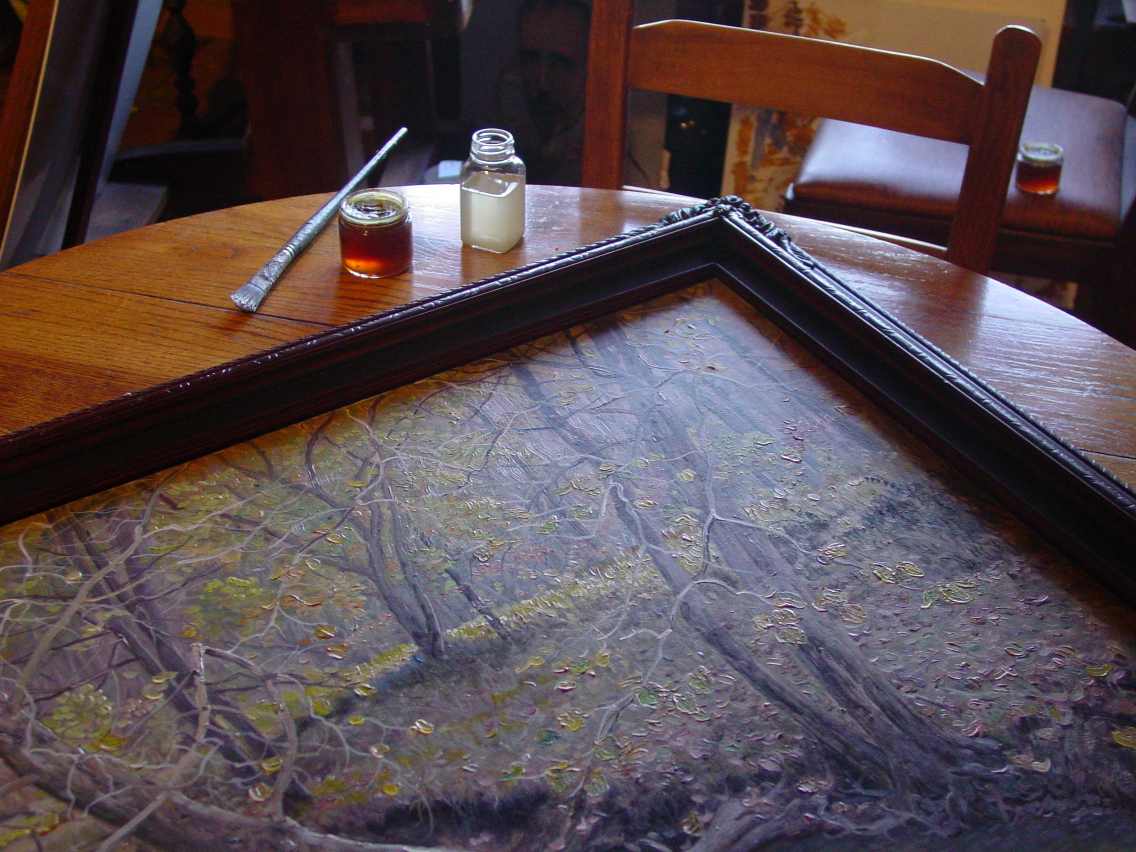
Dip your soft bristle brush into mineral spirits then take that solvent-drenched brush and swirl it around and around onto the surface of the ORIGIN varnish. This act is similar to using a wax-type shoe polish. As the brush is swirled around the firmly congealed surface of ORIGIN the solvent will mix with the varnish causing a soft slurry to form.

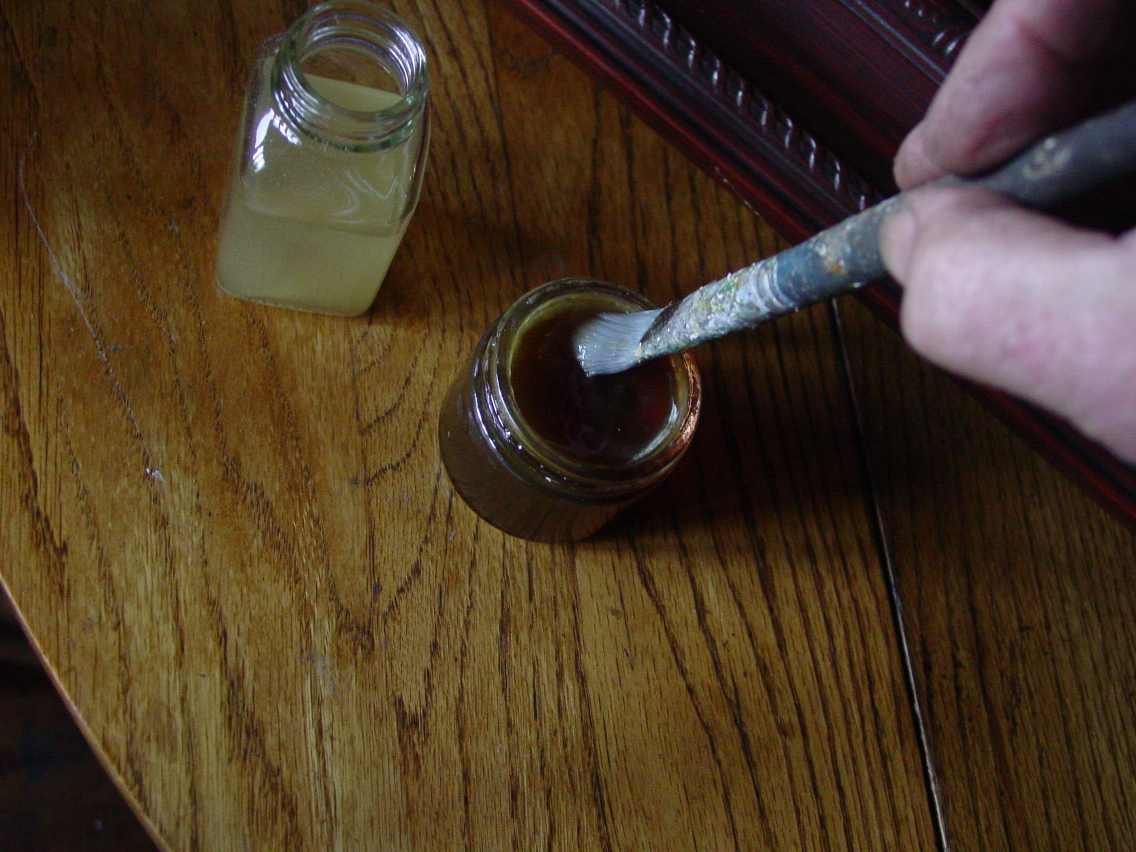
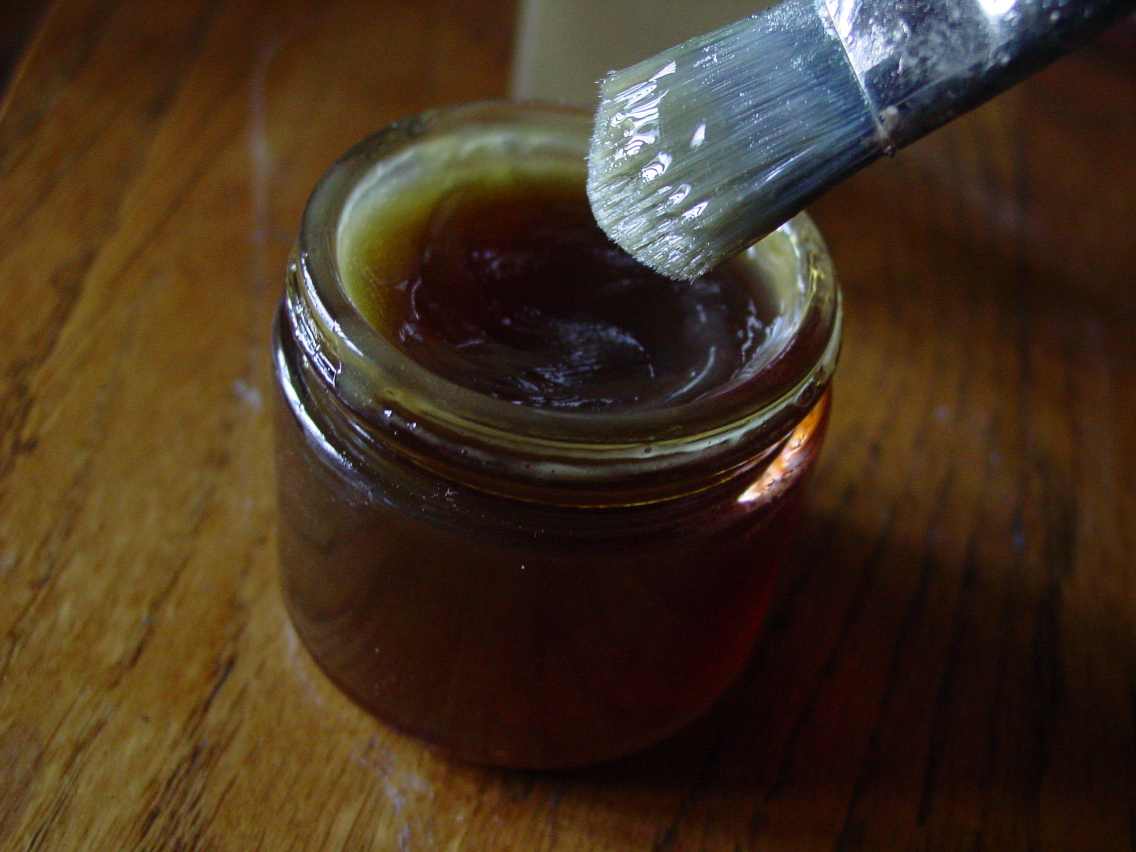
This slurry is then applied briskly onto a section of the painting so as to cover an area, say, of about 8-10-inches square. Be thorough and brush/scrub back-and-forth so as to make an even coating throughout the area of application. [Note: If the applied varnish beads (AKA "trickling"), stop; wipe away the varnish as best as can; then rub a slice of potato everywhere across the painting surface. Just use the slice as if it were a pad. If a large surface, use additional slices of the potato.The juice of the potato will etch the thin greasy wax-like exudate that has arisen from the oil in the paint.Wait 20 minutes then try the varnish again. There is no need to remove the haze left by the potato.]
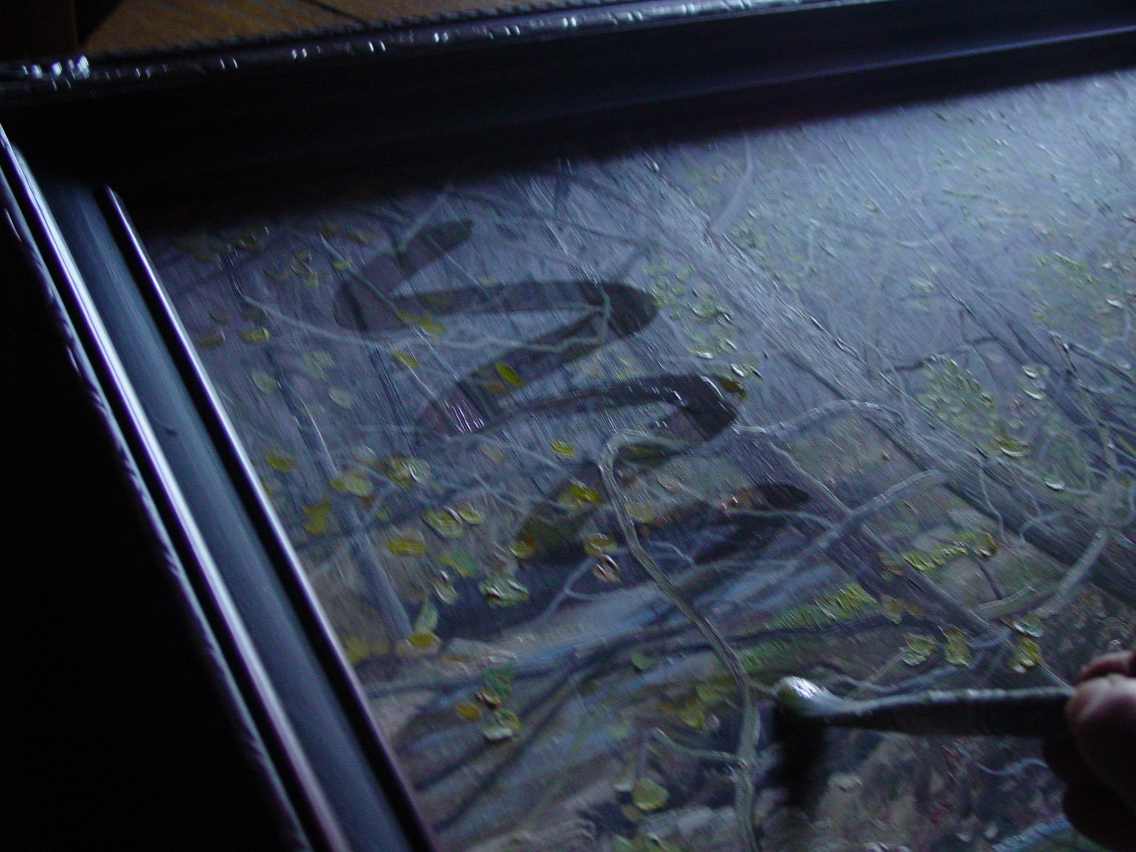
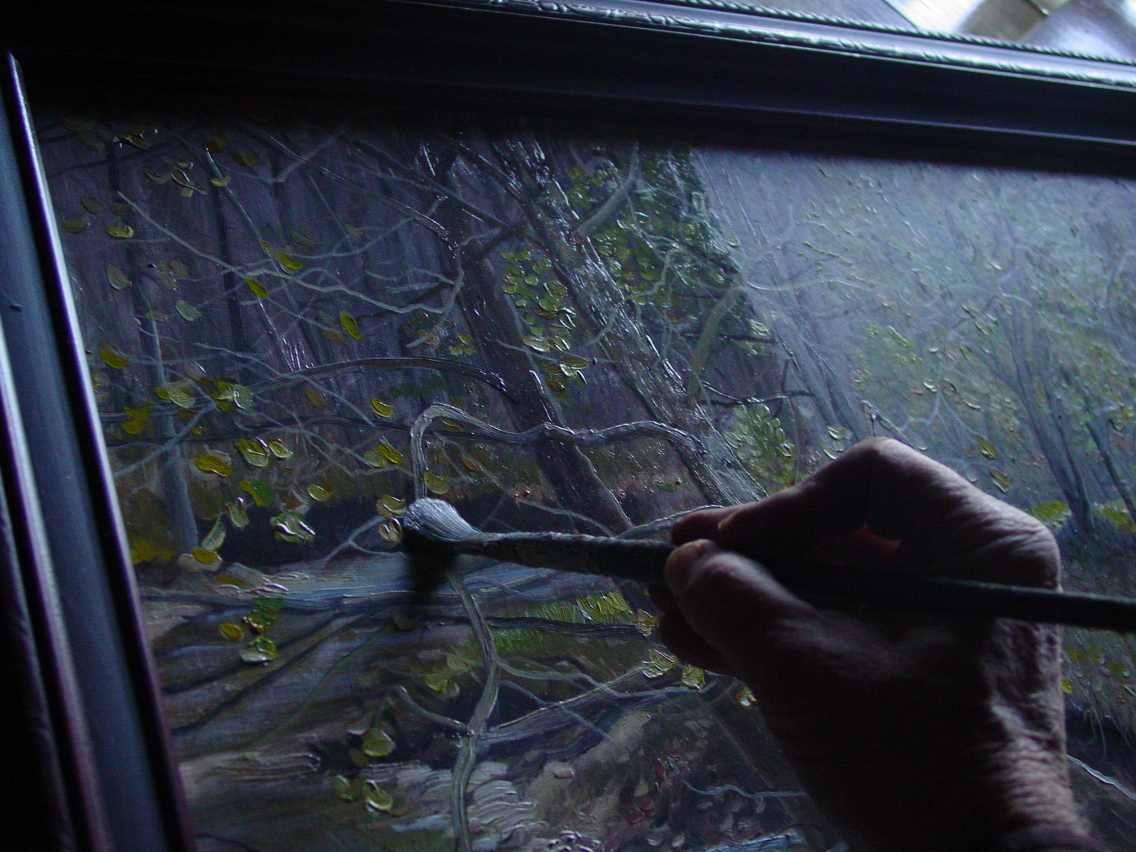
If possible, attempt to limit the area being coated to sections of the work that show a visual boundary. For example, try to coat the sky section first before doing a distant hill area. Then do the ground. If a portrait, do the background, then the face; then the clothing. This action is not necessary but it may help the novice achieve a smooth overall appearance in application.
Re-charge the brush with solvent; then again swirl that brush into/onto the ORIGIN to create the soft varnish slurry. Apply the brush to another adjoining section of the work and scrub the coating out thoroughly and evenly
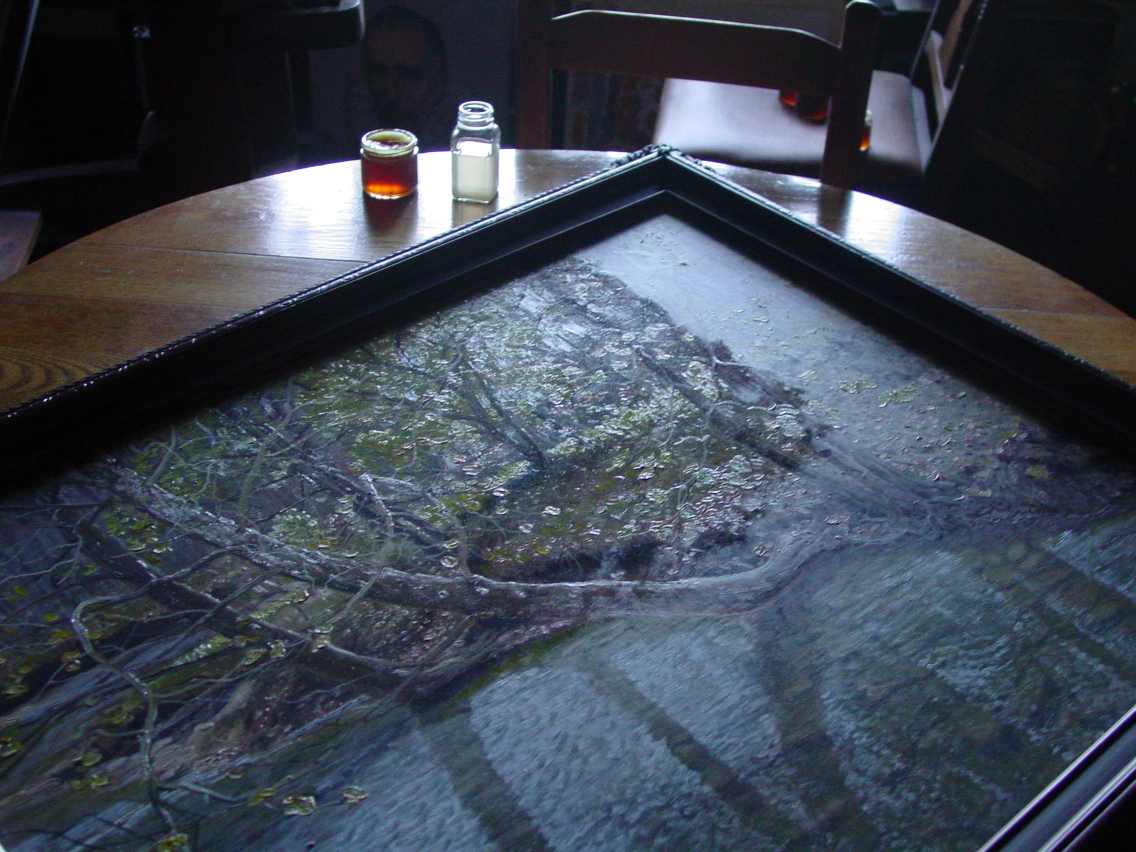
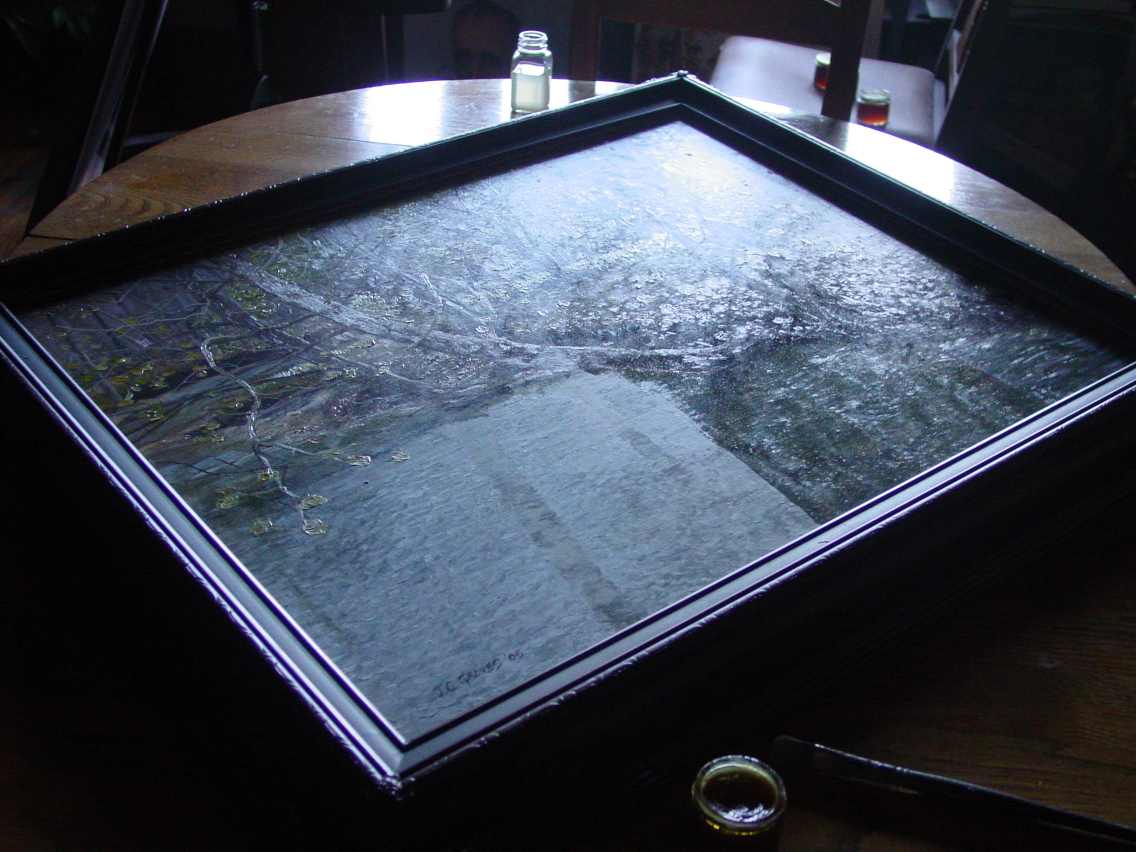
The final finish shows as an even sheen, not a high gloss. If a gloss is desired, re-coat the work within a half-hour or so with another layer of the solvent-ORIGIN slurry.

___________________________________________________________________________________________________________
This is a hidden copyrighted website.
James C. Groves